Fall is just around the corner and I’m probably benefiting from the early aspect of the fall migration. It’s this time of year that can be frustrating to birders to some extent, especially in regard to warblers… but also other species. The bright spring breeding colors and plumage patterns are often fading and that can make fall visitors much more difficult to identify. I used to tell my birding classes that you are the expert about what takes place in your own yard, but just about the time I think that there can’t be a bird that visits my yard that I can’t identify (after almost 30 years of birding) I’m left with a bagful of questions!
The photos on this blog are the culmination of several hours of sitting in the yard and observing our avian visitors. You get to see the highlights of my efforts, but there is a lot of time spent just observing the usual species that frequent the yard… and waiting for the possibility of a few special birds that give me the opportunity to photograph them.
The afternoon of August 21, 2014 was spectacular from the point of view of both photography and visitors, but I’m left with more questions than answers. I’ve got some great photos to share, but positive identifications are lacking so I’ll just give you my speculations and hope that some better birders than I can clarify some identifications.
With the foregoing preamble, I’ll show you a couple of photos of my first mystery guest. This bird is probably a vireo, best bets being either a Red-eyed vireo or a Warbling vireo, both of which can apparently be found in Western Washington. I would guess this bird is a juvenile… its lack of distinctive markings may make it impossible to get a positive identification. 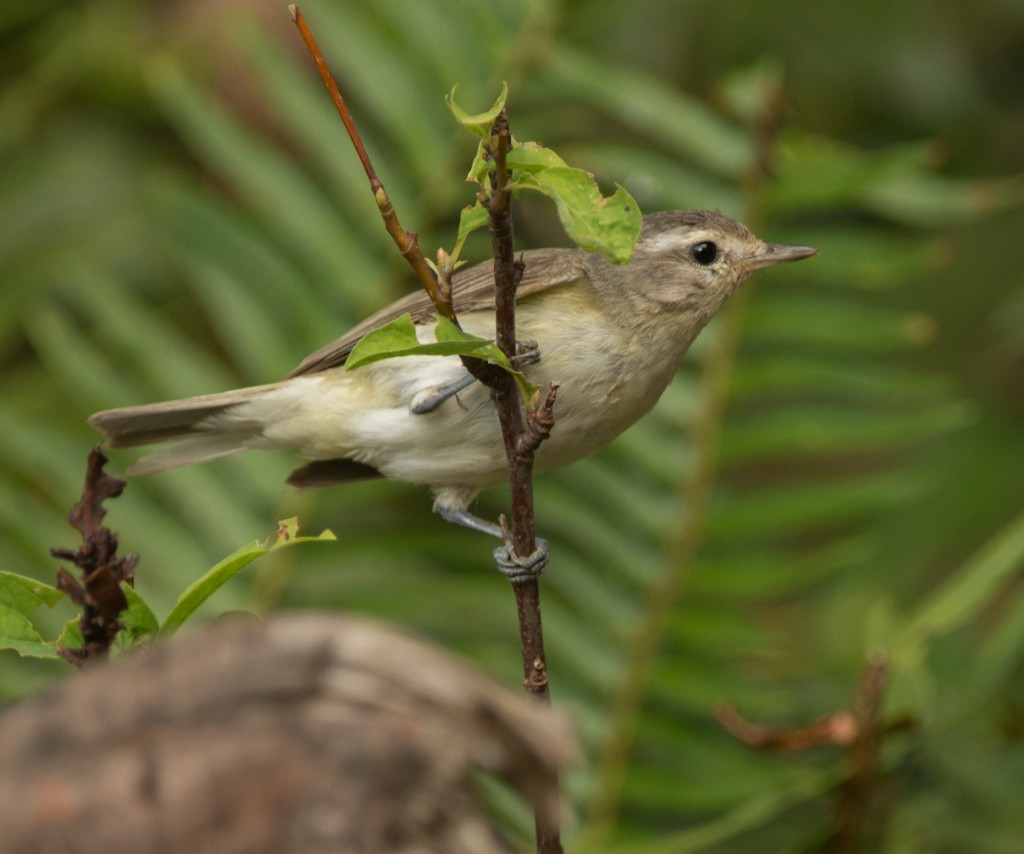
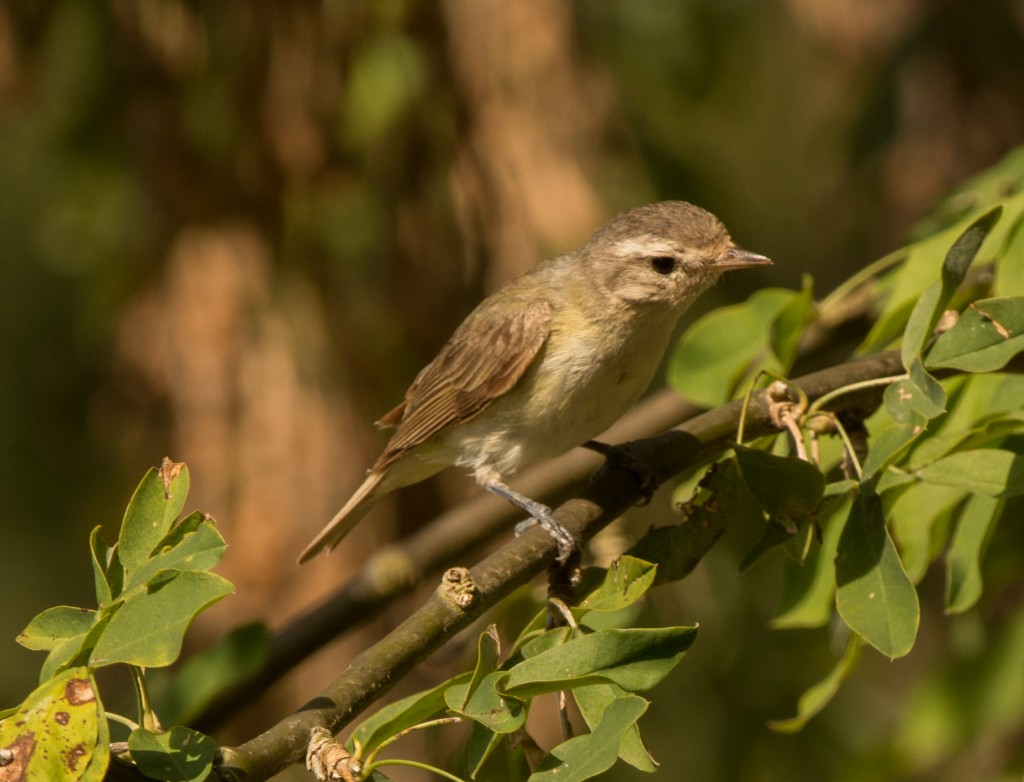
This next bird, which at the time I was photographing it I assumed was the first (male?) Yellow warbler observed in the yard this year, lacks any orange striping on it’s breast. Sibley indicates that there is such a Northern variety and I’m assuming that this is one of them. 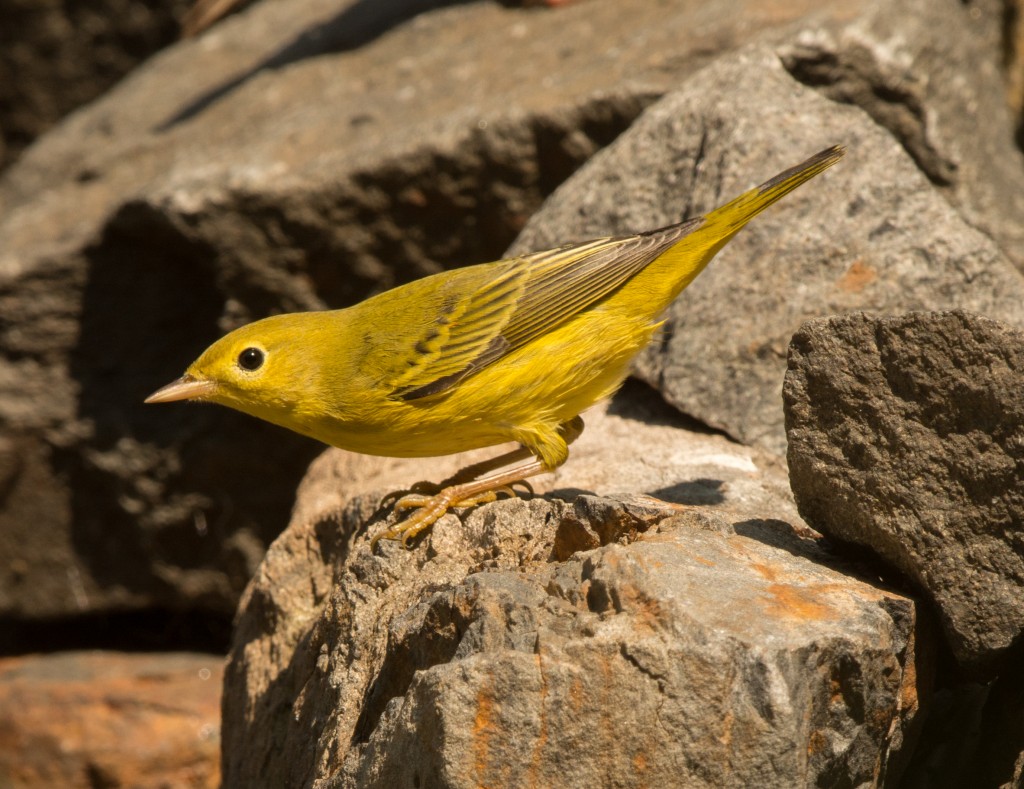 The bird spent the better part of a half hour (something I don’t normally get!) flying around the yard and investigating the watercourse. As a result I have retained some 65 photos of the bird in various poses and perched in different locations!
The bird spent the better part of a half hour (something I don’t normally get!) flying around the yard and investigating the watercourse. As a result I have retained some 65 photos of the bird in various poses and perched in different locations!
Next up, what I assumed was an Orange-crowned warbler at the time I was photographing it, but in reviewing my photos I’m not so sure. While this bird may look similar to the previous bird, The shape of it’s body was much more compact. However this bird seems too bright for an Orange-crowned warbler, especially given that this is the end of the breeding season. 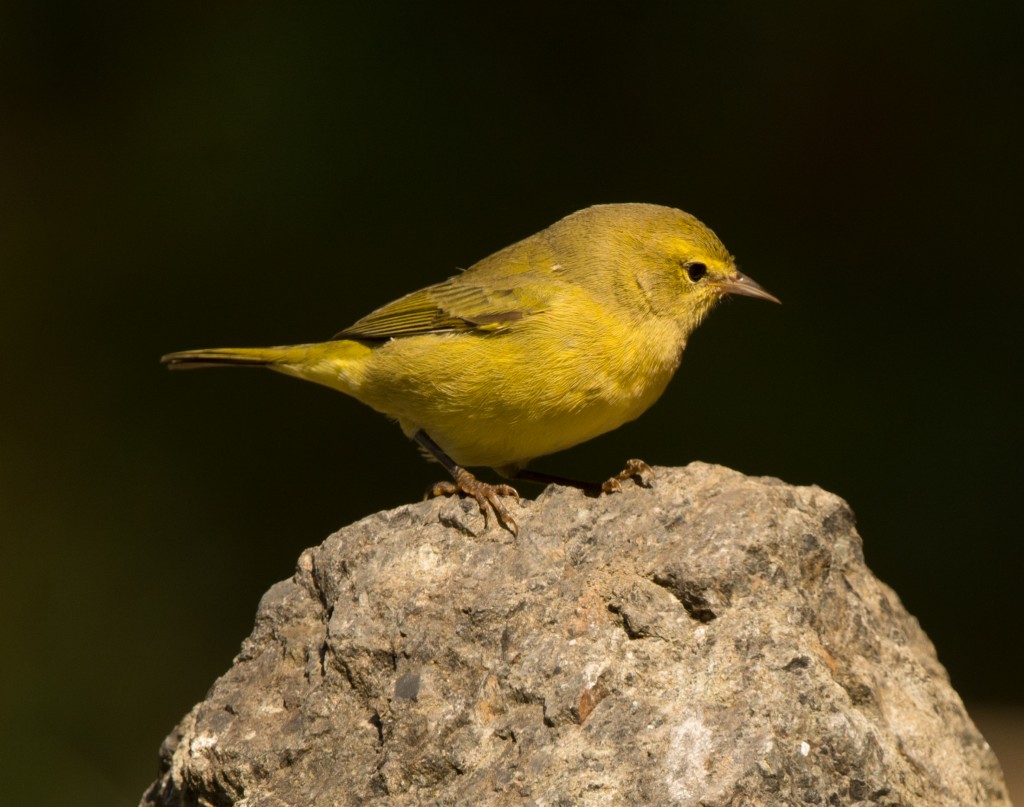
And to perhaps add to the confusion, here is a photo of a female Western tanager that visited on the same afternoon. This bird was larger than the previous two, had stripes on its wings and has a larger bill, so I am confident in this identification. 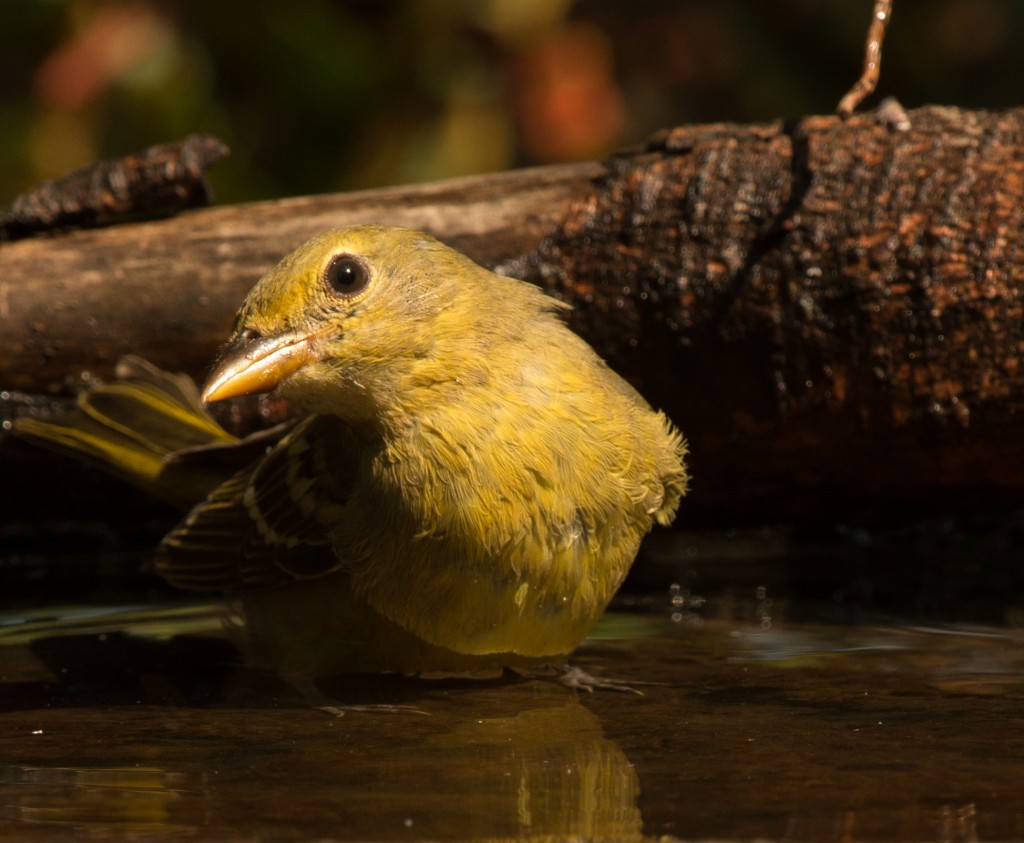
Here is a photo of a White-crowned sparrow, possibly one of our first pair who have ever nested in the area but whose breeding season was marred by raising a single Brown-headed cowbird. Sometimes the more you know about birding the sadder some of your observations can be. 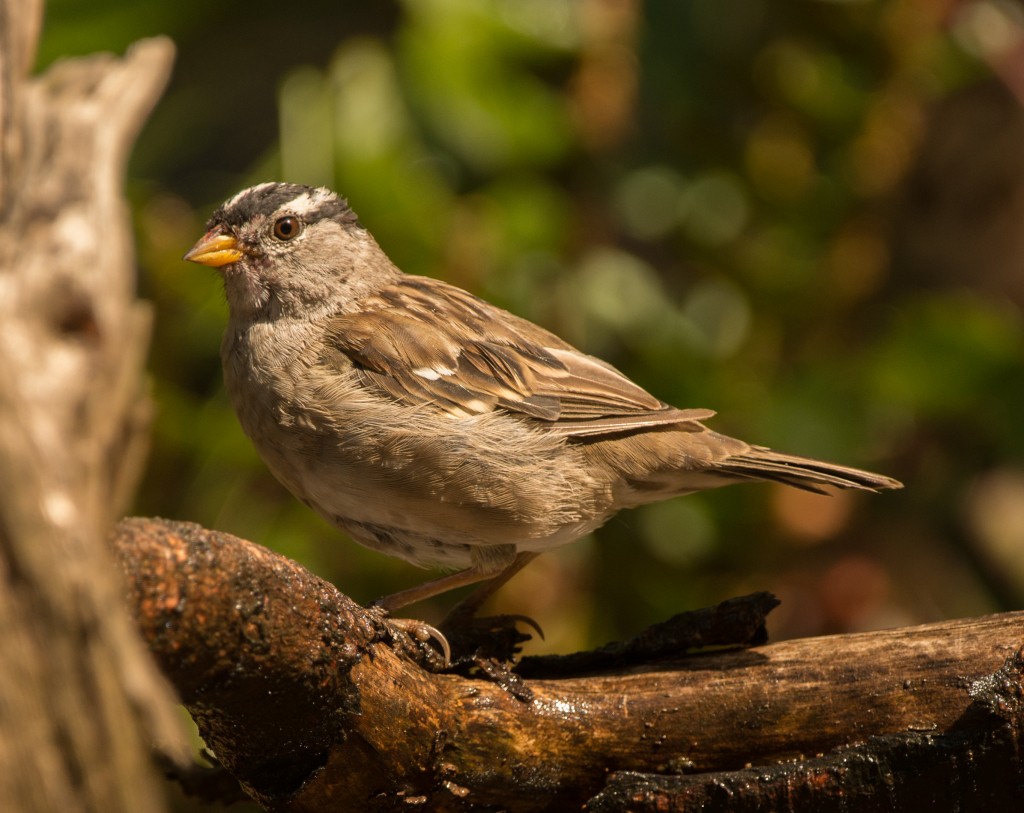
And finally, this season’s product of the successful raising of a Spotted towhee, in this instance taking a bath. Unfortunately we also had a pair of Spotted towhees who also raised a Brown-headed cowbird. 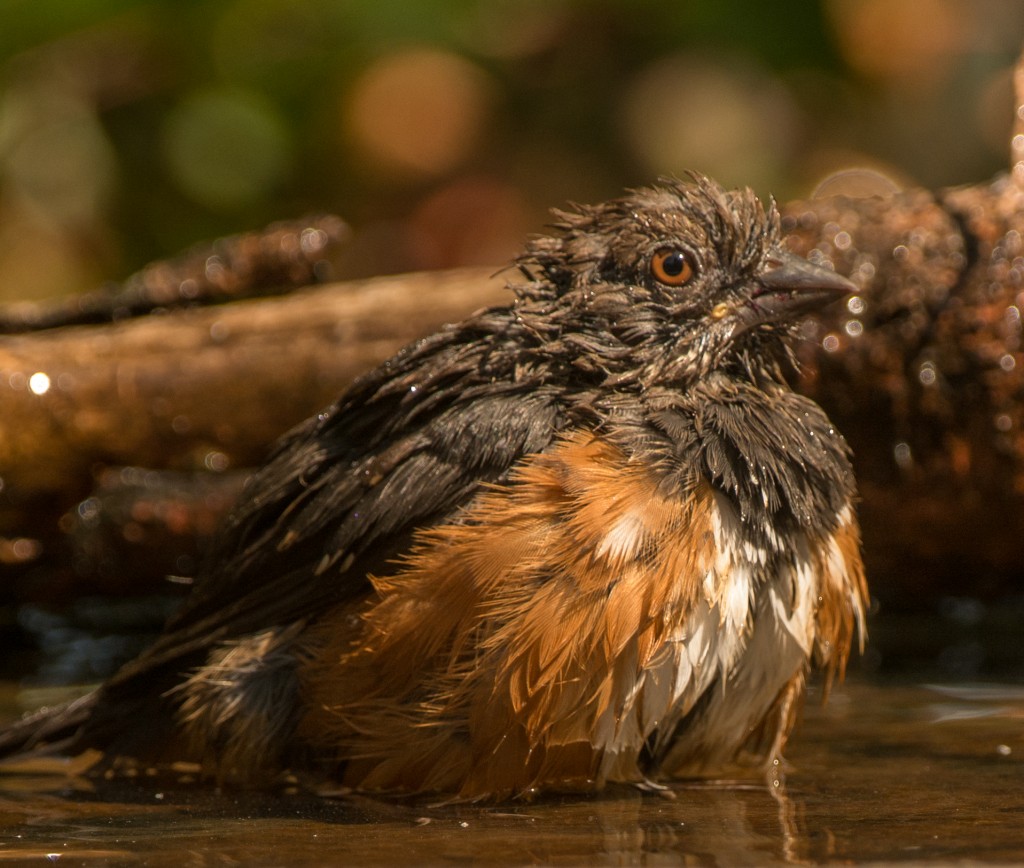
UPDATE:
It has been suggested to me that the vireo is a Warbling vireo, the first warbler is a Yellow warbler and the second bird is a “bright” Orange-crowned warbler. It would be the most colorful Orange-crowned warbler I’ve ever seen, but the only other thing it could be would be another Yellow warbler and I’m fairly sure it was not one due to the compactness and body shape. And a tip of the hat to all who attempted to help me with the mysteries!
